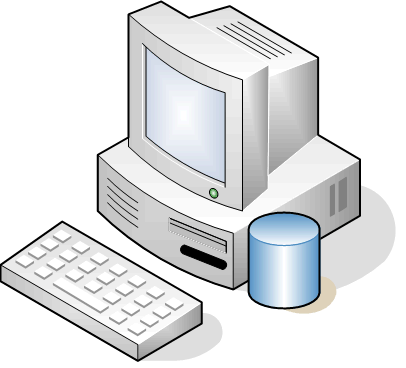Technical Prerequisites
In the ideal case, a PC lab equipped with enough computers for all students, with an Internet connection, a translation memory tool, a word processor, CD-ROM dictionaries, etc. Otherwise, a classroom with at least one PC equipped with an Internet connection, a translation memory tool, a word processor, CD-ROM dictionaries, etc.
Working Methodology
In this scenario, the teacher creates a translation memory database before the beginning of the course. Each student will get a copy of the teacher’s TM database at the beginning of the course, which will be the starting point for his/her own database. Students will be able to access their own local databases for the preparation of their general translation classes and for the translation of their texts. Towards the end of the course, the teacher can merge all correct translation strings from the students' local TM databases into a single TM database.
- The local TM database prepared by the teacher will be used by students as starting point for their own TM databases. This means that there will be one single TM database at the beginning and in the end there will be as many databases as students are on the course.
- Each student (or group of students) will be responsible for updating his/her own TM database, which implies storing their translations while translating, editing translation strings, etc.
- During classes, teacher and students can discuss the different translation proposals contained in the particular local database being projected. According to the resources available in the classroom (the Internet, CD-ROM dictionaries, paper dictionaries, etc.), students can research and collect new information during the class without necessarily entering it directly in their local TM databases (see also eCoLoTrain course ICT 5).
- If available in the TM tool used, a concordance feature can be used to show different translations of terms or phrases in different contexts contained in the database being projected.
- According to corrections made in class, students should update their own local TM databases as homework.
- In the same way and depending on the database structure, filters can be applied according to various criteria to show different information contained in the TM database.
- Teachers can ask students to enter their corrected translations in the local databases as new entries, thus showing the history of the translation of each student. This, in turn, represents interesting material for translation studies; for example, filtering a TM database according to error types and creation dates of entries could show the development of translations of a particular student, or could allow the investigation of how certain error types have been corrected, etc.
- Depending on the class objectives, teachers can merge students' TM database entries into a single database. Since all entries and changes made by students can be tracked by their user IDs, teachers can evaluate students’ translation work, make comparisons, etc.


